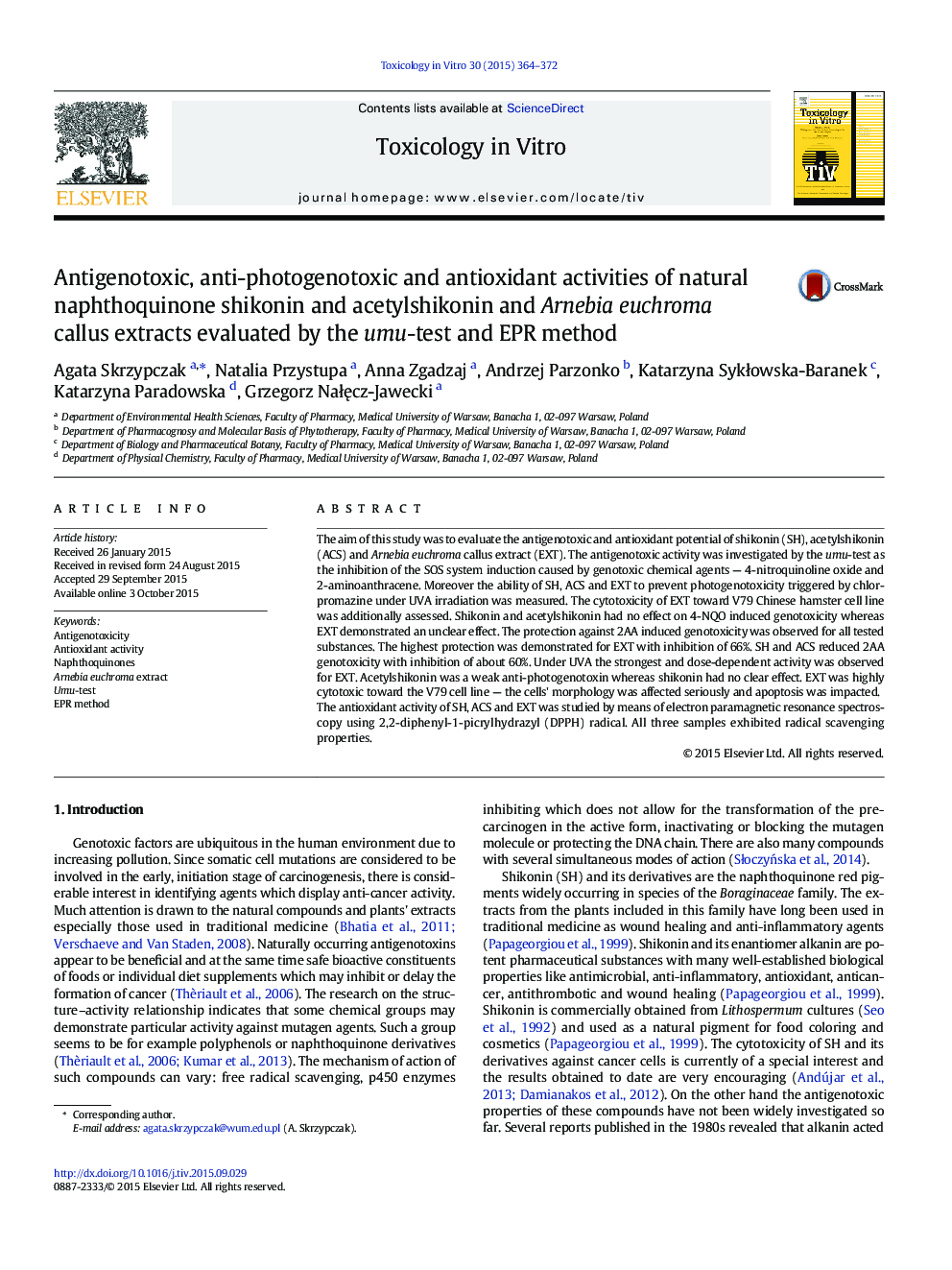| کد مقاله | کد نشریه | سال انتشار | مقاله انگلیسی | نسخه تمام متن |
|---|---|---|---|---|
| 2602422 | 1562715 | 2015 | 9 صفحه PDF | دانلود رایگان |

• We investigated antigenotoxic and antioxidant activities of natural naphtoquinones.
• We used bacterial umu-test with Salmonella typhimurium TA1535 and EPR method.
• Tested compounds showed strong antigenotoxic activity under metabolic activation.
• Tested naphtoquinones had antioxidant capacity.
• Naphthoquinone derivatives could become bioactive foods' components.
The aim of this study was to evaluate the antigenotoxic and antioxidant potential of shikonin (SH), acetylshikonin (ACS) and Arnebia euchroma callus extract (EXT). The antigenotoxic activity was investigated by the umu-test as the inhibition of the SOS system induction caused by genotoxic chemical agents — 4-nitroquinoline oxide and 2-aminoanthracene. Moreover the ability of SH, ACS and EXT to prevent photogenotoxicity triggered by chlorpromazine under UVA irradiation was measured. The cytotoxicity of EXT toward V79 Chinese hamster cell line was additionally assessed. Shikonin and acetylshikonin had no effect on 4-NQO induced genotoxicity whereas EXT demonstrated an unclear effect. The protection against 2AA induced genotoxicity was observed for all tested substances. The highest protection was demonstrated for EXT with inhibition of 66%. SH and ACS reduced 2AA genotoxicity with inhibition of about 60%. Under UVA the strongest and dose-dependent activity was observed for EXT. Acetylshikonin was a weak anti-photogenotoxin whereas shikonin had no clear effect. EXT was highly cytotoxic toward the V79 cell line — the cells' morphology was affected seriously and apoptosis was impacted.The antioxidant activity of SH, ACS and EXT was studied by means of electron paramagnetic resonance spectroscopy using 2,2-diphenyl-1-picrylhydrazyl (DPPH) radical. All three samples exhibited radical scavenging properties.
Journal: Toxicology in Vitro - Volume 30, Issue 1, Part B, 25 December 2015, Pages 364–372